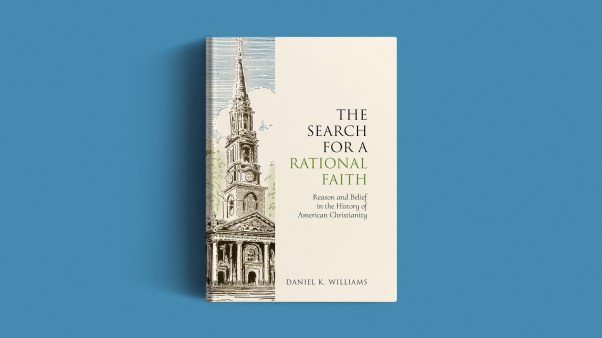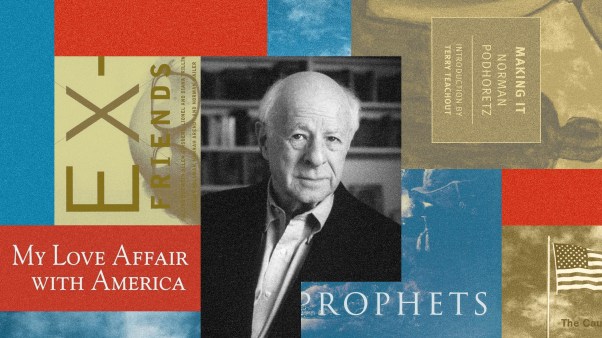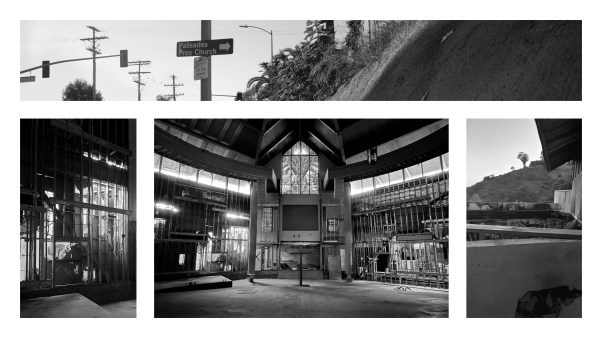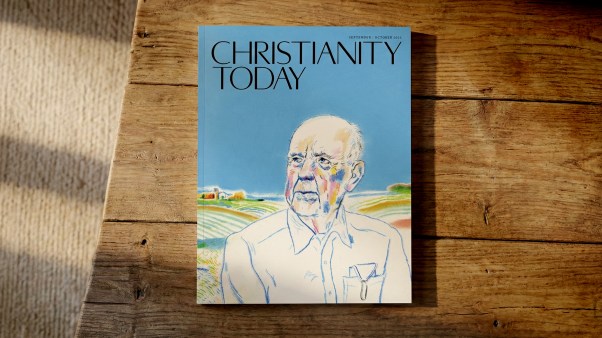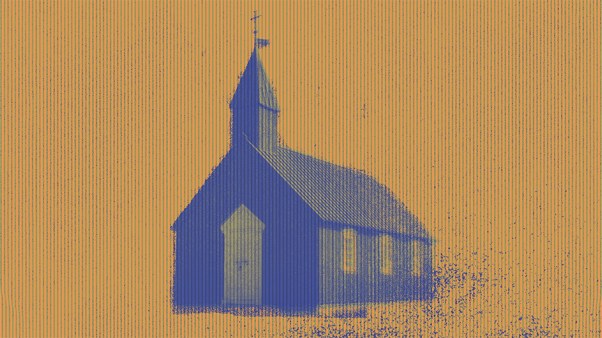My generation is among the least churched adults in America, but zoomers who are in the church are quietly steering its worship in two directions at once.
On the one hand, some are flocking to more traditional and liturgical forms of Christianity like Eastern Orthodoxy. Though a lot of reporting on this trend has been more anecdote than data, a 2024 survey from the Orthodox Studies Institute found Orthodox parishes in the US have a rising number of converts, many of whom are young ex-Protestants.
On the other hand, contemporary Christian music (CCM) is thriving, led by artists like Maverick City Music, Elevation Worship, and Forrest Frank. CCM was the fourth fastest-growing music genre in the US in the first half of 2024, and market research indicates younger audiences are driving much of this growth.
So is Gen Z at worship traveling back in time or making its home in modernity? I believe that the answer is both at once—and that the primary worship divide in my generation isn’t random, nor is it strictly about theology, denomination, or politics (though it’s related to all of those). The main difference is sex. Zoomers gravitating toward traditional worship are mostly men, while CCM resonates primarily with women.
These aren’t rigid categories, of course. There’s plenty of crossover—I myself have been swept up by the emotional power of CCM and am sympathetic to friends who have ditched the auditorium for the cathedral. And there are churches that combine traditional liturgies with CCM songs.
But if this pattern generally holds, it points to a future where a growing sex divide extends beyond politics and other cultural preferences into our sanctuaries. It may become an increasing point of tension in Christian marriages—or, if young men and women sort themselves into different churches entirely, may be one factor keeping those marriages from happening at all.
For me, this divide is personal. These aren’t just national trends but stories I’ve seen in my own community, among my own friends. I don’t think these are isolated incidents, and I think they’ll be influential in the future of the American church.
It’s too early to be sure how this will all play out. But for now, I think it’s worth noticing three things on the way to asking what should be done.
First, the Gen Z worship divide is connected to how zoomer men and women understand faith itself. For many Gen Z men, traditional worship is less about nostalgia and more about nonnegotiables. In their eyes, true faith doesn’t bend with the culture. It plants its feet, folds its arms, and says, This is what we believe. It hasn’t changed. It won’t change. Take it or leave it. This is a common theme in reporting on young men moving toward Orthodoxy. They want stability as a stark counterpoint to a culture characterized by constant reinvention.
Faithful women in Gen Z tend to be more interested in personal authenticity and intimacy with God through personal devotion—it’s not that they don’t care about eternal theological truths, but they care greatly about an individual sense of honesty and vulnerability. CCM lyrics are emotive and expressive. In CCM, an authentic faith proclaims, This is me—no filters, no pretense. I’m here, as I am, before a God who loves me. This too can be countercultural in an age dominated by curated personas, but it’s a starkly different expression of worship from that of more traditional liturgy.
Second, this worship divide is influenced by the growing segregation of Gen Z men and women online, and that digital pattern will have further-reaching spiritual effects.
Subsets of platforms like Reddit, Quora, YouTube, and X (formerly Twitter), all of which have a majority male user base, have become hubs for discussing theology. Consider the Orthodox Christianity discussion board on Reddit, with over 85,000 members, many of them young men discovering and deepening their interest in Orthodoxy. A member of an Orthodox church in Riverside, California, told the New York Post that he has seen several young men join his congregation after encountering Orthodoxy through digital spaces like this.
Meanwhile, CCM thrives on Instagram and TikTok, where audiences engage with its emotional and visual appeal. The influence of all these digital media is self-reinforcing—the more we consume, the more the algorithm sends our way—and it will affect more than worship music and liturgical choices. The theology the TikTok algorithm serves up to a 21-year-old woman is worlds apart from what’s trending on Orthodox Reddit or Jordan Peterson’s YouTube feed. And while Peterson, a non-Christian, at least invites long-form engagement with real questions, his answers aren’t always rooted in Christian orthodoxy. TikTok, meanwhile, delivers spiritual content with the depth of a bumper sticker and the lifespan of a fruit fly.
Churches can’t change the algorithm, of course, or coerce men and women into the same online spaces. But neither can they ignore this pattern lest digital divides dictate discipleship. Men need more than intellectual stimulation and stoic self-help; they need the historic, embodied faith of orthodox Christianity with all its beauty, challenge, and intimacy. And women, just as much, need grounding in theological depth and tradition, not just vibes, reels, and vague inspiration. But for now, the genders are divided by algorithm.
Lastly, Gen Z worship differences are tied to bigger patterns in what men and women tend to want. As social psychologist Jonathan Haidt argues in The Anxious Generation, men often prioritize agency (the ability to overcome inner and external obstacles to grow stronger and achieve purpose) while women frequently prioritize communion (the pursuit of relationships, connection, and harmony).
For young men interested in discipline, self-mastery, and resilience, Orthodoxy and similar traditions offer structured liturgies and rigorous fasting. CCM evangelicalism does not. But for young women who emphasize personal connection and devotion to God, CCM will resonate because the industry is making music with exactly this demographic in mind.
If these two trajectories continue, I don’t expect another round of the “worship wars” of the 1990s. Instead, I think we’ll see a structural divide—not heated debate over hymns and electric guitars but a slow fade into wholly separate congregations.
Christians have split into different churches for all kinds of reasons since the Reformation and the Great Schism before it. Some traditions have even had men and women sit on opposite sides of the sanctuary—but we’ve never seen entire churches split by gender. That would be new.
It would also be a problem for obvious reasons, and much of American evangelicalism—even in complementarian churches where women are not in leadership roles—falls squarely on the CCM side of the spectrum. What can evangelicals do?
Author and pastor Gavin Ortlund’s retrieval theology offers a compelling solution. His idea is about recovering historic Christian traditions to enrich modern worship—not rejecting contemporary forms like CCM but deepening them. Retrieval theology calls for the church to look backward in order to move forward, reclaiming lost practices and distinctives that historically shaped Christian worship and discipleship.
For many evangelical churches, a renewed emphasis on the Lord’s Supper could be the first step. Weekly observance, perhaps, instead of monthly, quarterly, or yearly. This is an act of both agency and communion. It calls believers to examine ourselves, participate together, and encounter the presence of Christ in a personal way.
We could also revive other historic practices—like responsive prayers or creedal recitation—that shaped Christian worship for centuries but have faded in many modern evangelical settings. These worship elements can provide the rigor young men are seeking without alienating women. They are traditional and communal at once, and a written prayer can be a vehicle for personal vulnerability and relationship with God just as much as a CCM song.
Pastors can attend to the need for balance between agency and communion too. There is “a time to weep and a time to laugh, a time to mourn and a time to dance” (Ecc. 3:4)—a time for comforting sermons of grace and solace and a time for hard truths and clear direction from the pulpit.
Indeed, it’s not liturgy alone that draws young men to Orthodoxy; it’s the call to a life of self-discipline and purpose. Evangelical churches making a similar call will sound a bit different, but we can pair contemporary worship with exhortation to prayer, fasting, and confession. This renewed focus on spiritual disciplines is already gaining traction among young evangelicals, largely through the influence of John Mark Comer. Evangelicalism more broadly can call young men not just to survey the wondrous cross but to take up their own.
Authenticity and stability don’t have to be at odds, and evangelicalism need not shortchange women for the sake of men. A church that integrates tradition and innovation, structure and emotion, agency and communion in worship sends a powerful message: Our faith is personal, rooted, and distinct. Men and women can come together in harmony, not homogeny, to worship the God who made us all. For the sake of my generation, I pray we do.
Luke Simon is a content strategist for The Crossing church in Columbia, Missouri, and MDiv student at Covenant Theological Seminary. He has written on Gen Z, technology, masculinity, and the church. You can follow him on X.















